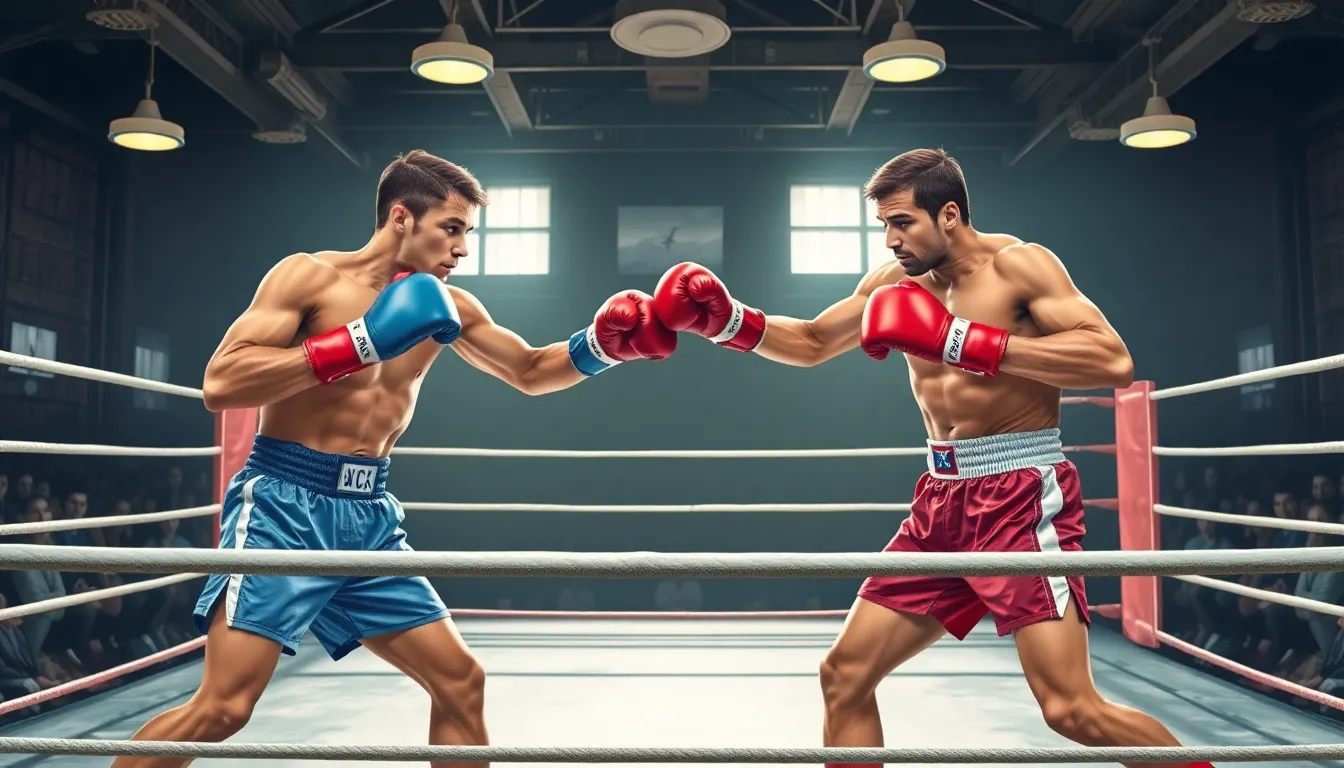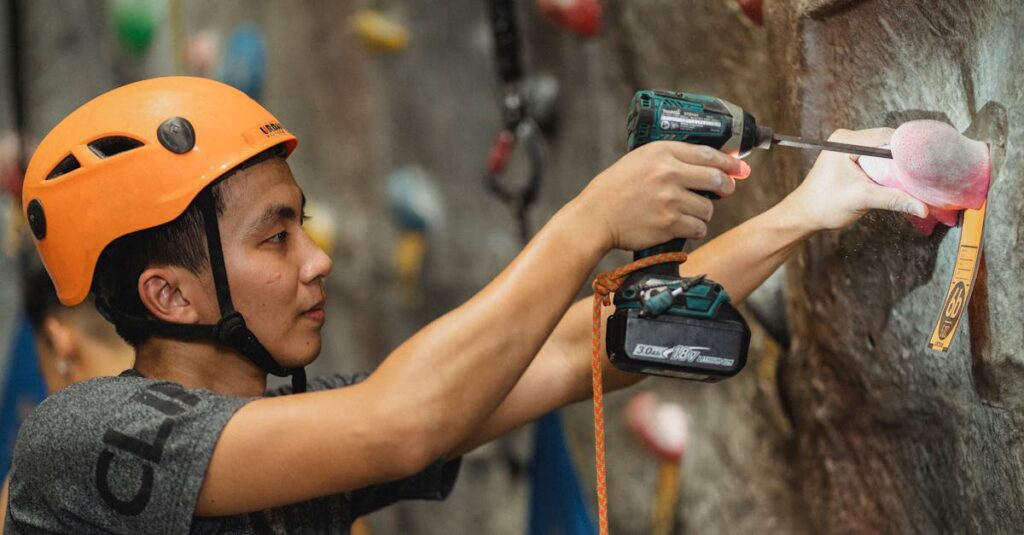In the world of sports, few nicknames pack as much punch as “the sweet science.” This term isn’t just a clever moniker; it’s a testament to the grace, strategy, and raw power that define the sport. While some might think it refers to a culinary competition, it actually points to the art of boxing—a thrilling blend of athleticism and mental prowess that keeps fans on the edge of their seats.
Boxing’s allure lies in its ability to combine brute strength with finesse. Fighters dance around the ring, delivering blows that require not just muscle but also intelligence and strategy. So, whether you’re a die-hard fan or a curious newcomer, get ready to explore why this sport has earned its sweet nickname and why it continues to captivate the hearts of millions.
What Sport is Nicknamed the Sweet Science
Boxing, often referred to as the sweet science, merges athleticism with strategy. Focus is placed on timing and precision, with each punch requiring careful consideration. Different styles and techniques characterize the sport, contributing to its allure.
The combination of grace and power defines boxing. Fighters demonstrate physical prowess while employing tactical maneuvers. Each bout showcases not only strength but also the fighter’s intellectual approach to combat.
Debates often arise regarding boxing’s brutality compared to other sports, yet its strategic elements shine through. Competing athletes analyze opponents’ behaviors and weaknesses. This cerebral aspect elevates boxing beyond mere physical confrontation.
Fans appreciate the sport for its historical significance and cultural impact. Events draw large audiences and broadcast millions across various platforms. Recognition of boxing’s champions, like Muhammad Ali and Mike Tyson, further solidifies its prominence.
Engagement in boxing extends beyond the ring. Numerous gyms and training facilities promote its practice. People from diverse backgrounds partake in boxing for fitness, self-defense, and personal growth.
Respect for opponents remains paramount in boxing. Sportsmanship and mutual admiration often develop between fighters. This respect contributes to the sport’s reputation as a disciplined endeavor.
The nickname “sweet science” encapsulates the essence of boxing. Its blend of allure, strategy, and physicality captures the imagination of devoted fans and newcomers alike. Each matchup offers a compelling narrative, reinforcing boxing’s exceptional status in the realm of sports.
The Origins of the Nickname

The nickname “the sweet science” captures the essence of boxing as a sport that emphasizes strategy and finesse.
Historical Context
Originating in the 19th century, boxing gained recognition in England, particularly with the establishment of the Marquess of Queensberry Rules in 1867. These rules formalized the sport, implementing rounds and safety measures. Boxers embraced this structured approach, pairing athleticism with technique. The term “sweet science” possibly emerged from a 1910 article by journalist John W. Sullivan, highlighting the intellectual aspects of boxing. Boxing’s evolution mirrors societal changes, reinforcing its reputation as a sophisticated sport.
Key Figures in Boxing History
Several key figures have shaped boxing’s identity and reinforced the “sweet science” nickname. Muhammad Ali, celebrated for his agility and strategy, mastered the sport with unmatched skill. Joe Louis showcased power and technique, becoming an icon of the heavyweight division. Sugar Ray Robinson pioneered a blend of speed and style, influencing countless fighters. These athletes transcended the sport, demonstrating that boxing involves intellect, artistry, and grace. Through their legacies, they solidified boxing’s reputation as a complex and respected discipline.
The Fundamentals of Boxing
Boxing combines various techniques, skills, and rigorous training, making it a complex sport to master.
Techniques and Skills
Boxers utilize different techniques to enhance performance in the ring. Footwork plays a crucial role, allowing fighters to move quickly and effectively evade punches. They also rely on jabs and hooks, which generate power and precision in strikes. Defensive maneuvers, including slipping and weaving, protect against incoming blows while creating opportunities for counterattacks. Additionally, stamina and hand-eye coordination are vital, enabling boxers to maintain agility during bouts. Each boxer develops a unique style, demonstrating the artistry behind every match.
Training and Conditioning
Training programs for boxing focus on building strength and endurance. High-intensity interval training significantly augments cardiovascular fitness, essential for maintaining energy throughout rounds. Sparring sessions hone reflexes and techniques, providing practical experience in a controlled environment. Nutritional strategies also play a vital role, ensuring boxers fuel their bodies adequately for peak performance. Emphasis on mental conditioning prepares fighters for the psychological aspects of competition. Consistency in training solidifies skills and instills discipline, vital for success in the ring.
The Cultural Impact of Boxing
Boxing significantly influences culture and society, extending beyond its physical boundaries.
Boxing in Media and Entertainment
Boxing’s portrayal in films and television underscores its dramatic appeal and storytelling potential. Notable films, such as “Rocky” and “Raging Bull,” showcase the struggles and triumphs of boxers, often resonating with audiences on an emotional level. Television broadcasts, especially major fight nights, attract millions of viewers, turning bouts into cultural events. Documentaries featuring champions like Mike Tyson and Muhammad Ali add depth, revealing personal journeys and the sport’s broader implications. Music also embraces boxing, with iconic songs often associated with fighters and memorable moments. This multifaceted representation heightens boxing’s status as an art form and a spectacle, enhancing its cultural significance.
Boxing’s Role in Society
Boxing plays a critical role in promoting fitness, discipline, and community engagement. Many individuals practice boxing for self-defense, stress relief, and physical conditioning. Local gyms often create supportive environments where aspiring athletes train and gather for camaraderie. Youth programs using boxing teach essential life skills, such as perseverance and respect. The sport’s global reach fosters unity among diverse groups, transcending social and economic barriers. Events and exhibitions raise awareness for charitable causes, linking boxing with community philanthropy and social justice efforts. Through these avenues, boxing contributes to personal growth and societal well-being, reflecting its importance in everyday life.
Conclusion
Boxing, known as “the sweet science,” continues to captivate audiences with its unique blend of athleticism and strategy. The sport’s rich history and cultural significance highlight its role beyond mere competition. Each fight tells a story that resonates with fans and newcomers alike, showcasing the artistry and intellect required to excel in the ring.
As boxing evolves, it remains a powerful force in promoting fitness and community engagement. The respect shared among fighters further enhances its appeal, fostering a spirit of sportsmanship that transcends the sport itself. Ultimately, boxing’s enduring legacy as “the sweet science” reflects its complexity and the profound impact it has on individuals and society.



